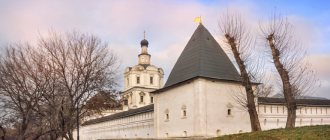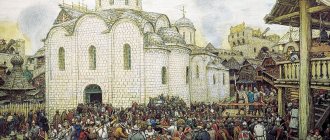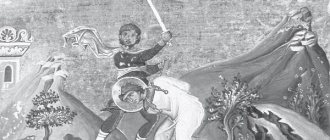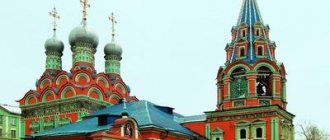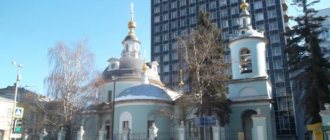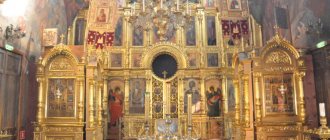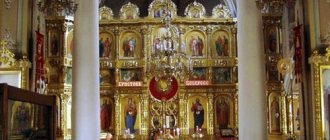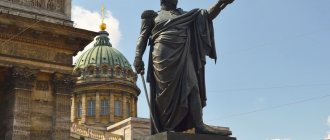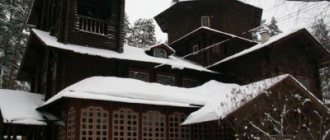Mir
Russia Moscow Trinity Church in Khoroshevo (Moscow) Map is loading...
{"format":"leaflet","minzoom":false,"maxzoom":false,"limit":50,"offset":0,"link":"all","sort":[""], "order":[],"headers":"show","mainlabel":"","intro":"","outro":"","searchlabel":"\u2026 \u0441\u043b\u0435\ u0434\u0443\u044e\u0449\u0438\u0435 \u0440\u0435\u0437\u0443\u043b\u044c\u0442\u0430\u0442\u044b","default":"","import-annotation":false,"width ":"auto","height":"350px","centre":{"text":"","title":"""link":"""lat":55.77609700000000003683453542180359363555908203125,"lon": 37.4568009999999986803231877274811267852783203125,"icon":""},"title":"","label":"","icon":"","lines":[],"polygons":[],"circles":[ ],"rectangles":[],"copycoords":false,"static":false,"zoom":8,"defzoom":14,"layers":["OpenStreetMap"],"image layers":[] ,"overlays":[],"resizable":false,"fullscreen":true,"scrollwheelzoom":true,"cluster":false,"clustermaxzoom":9,"clusterzoomonclick":true,"clustermaxradius":80, "clusterspiderfy":true,"geojson":"","clicktarget":"","showtitle":true,"hidenamespace":false,"template":"","userparam":"","activeicon": "","pagelabel":false,"ajaxcoordproperty":"","ajaxquery":"","locations":[{"text":"\u003Cb\u003E\u003Ca href=\"/palomnik/%D0% A2%D1%80%D0%BE%D0%B8%D1%86%D0%BA%D0%B8%D0%B9_%D1%85%D1%80%D0%B0%D0%BC_%D0%B2_% D0%A5%D0%BE%D1%80%D0%BE%D1%88%D0%B5%D0%B2%D0%B5_(%D0%9C%D0%BE%D1%81%D0%BA%D0 %B2%D0%B0)\» title=\»\u0422\u0440\u043e\u0438\u0446\u043a\u0438\u0439 \u0445\u0440\u0430\u043c \u0432 \u0425\u043e\u0440\u043e\u0 448\ u0435\u0432\u0435 (\u041c\u043e\u0441\u043a\u0432\u0430)\»\u003E\u0422\u0440\u043e\u0438\u0446\u043a\u0438\u0439 \u0445\u0440 \u0430\u043c \u0432 \ u0425\u043e\u0440\u043e\u0448\u0435\u0432\u0435 (\u041c\u043e\u0441\u043a\u0432\u0430)\u003C/a\u003E\u003C/b\u003E\u003Chr /\u0 03E\u003Ca href= \"/palomnik/%D0%A1%D0%B2%D0%BE%D0%B9%D1%81%D1%82%D0%B2%D0%BE:%D0%90%D0%BD%D0%BD %D0%BE%D1%82%D0%B0%D1%86%D0%B8%D1%8F\" title=\"\u0421\u0432\u043e\u0439\u0441\u0442\u0432\u043e:\u0410\ u043d\u043d\u043e\u0442\u0430\u0446\u0438\u044f\»\u003E\u0410\u043d\u043d\u043e\u0442\u0430\u0446\u0438\u044f\u003C/a\u003E: \u041f\u043e\u0441 1598 1598 \u0440\u0438\u0441\u0430 \u0413\ u043e\u0434\u0443\u043d\u043e\u0432\u0430 \u0432 \u0435\u0433\u043e \u0432\u043e\u0442\u0447\u0438\u043d\u0435, \u0441\u0435 \u043b\u0435 \u0425\u043e\u0440 \u043e\u0448\u0451\u0432\u0435, \u043f\u043e \u043e\u0431\u0440\u0430\u0437\u0446\u0443 \u041c\u0430\u043b\u043e\u0433\u043 e\u0441\u043e\u0431\u043e\ u0440\u0430 \u0414\u043e\u043d\u0441\u043a\u043e\u0433\u043e \u043c\u043e\u043d\u0430\u0441\u0442\u044b\u0440\u044f \u043f\u 0440\u0435\u0434\u043f\u043e\ u043b\u043e\u0436\u0438\u0442\u0435\u043b\u044c\u043d\u043e \u0424\u0451\u0434\u043e\u0440\u043e\u043c \u041a\u043e\u043d\u0 451\u043c. \u0422\u0440\u0430\u043f\u0435\u0437\u043d\u0430\u044f \u0447\u0430\u0441\u0442\u044c \u0438 \u043a\u043e\u043b\u043e\u043a \u043e\u043b\u044c\u043d\u044f 2014 XIX 425\u043e\ u0440\u043e\u0448\u0435\u0432\u0435 (\u041c\u043e\u0441\u043a\u0432\u0430)»»link»:»»»lat»:55.7760970000000000368345354218035936355 5908203125,"lon":37.4568009999999986803231877274811267852783203125,"icon": ""}],"imageLayers":[]}
55.776097; 37.456801
Russia, Moscow, Karamyshevskaya embankment, 15с1
Moscow
Russia
Telephone:
+7 499 197-30-29, +7 916 158-40-62; fax: +7 499 199-96-05
Church of the Life-Giving Trinity in Khoroshev in Moscow
- Orthodox church of the Moscow diocese. Built in 1598 by order of Boris Godunov in his estate, the village of Khoroshevo, modeled after the Small Cathedral of the Donskoy Monastery, presumably by Fyodor Kon. The refectory and bell tower are from the 19th century.
History[edit]
Initially, the area beyond the Khodynia River, on the road from Moscow to Zvenigorod (Zvenigorodsky tract), was called “Khodynsky Meadow”; at the turn of the 15th-16th centuries, the new name “Conversations” supplanted the previous one from the documents. Finally, in 1572, the palace village of Khoroshevo was first mentioned in documents. Presumably in 1594, Tsar Feodor Ioannovich gave Khoroshevo to his brother-in-law, Boris Godunov, and he began to renovate the estate.
Construction of the temple not far from the royal traveling wooden palace supposedly began between 1596 and 1597.
In 1598, the temple was consecrated in the name of the Life-Giving Trinity. In 1650 the chapel of St. Nicholas the Wonderworker was mentioned, and in 1710 the chapel of Theodore Stratilates was mentioned.
In the 17th century the temple gained great fame; On June 13, 1619, Patriarch Filaret, who was heading to the capital, was met here. Tsar Alexei Mikhailovich repeatedly came to services in Khoroshevo. Several surrounding villages were assigned to the temple.
Initially, the temple with two chapels was surrounded by a porch. In 1745, a separate bell tower was added.
During the Patriotic War of 1812, the village occupied by the French, along with the temple, was plundered. However, church life in the church “with the help of parish people and willing donors” resumed quite soon. On January 27, 1813, the restored St. Nicholas chapel was consecrated, and on June 7 of the same year the main altar was consecrated.
In the 1840s, instead of the porch, which was dismantled, an extensive refectory was built, connecting the temple buildings and bell towers into a single complex.
Until 1918, the temple owned 2 acres of 575 square fathoms of estate land, on which there were wooden houses of clergy and a graveyard. The staff of the clergy consisted of a priest, two psalm-readers and a malt-mealer.
In 1922, church valuables were confiscated from the temple.
In 1925, the temple was robbed three times.
On August 5, 1939, the Moscow Regional Committee of the Soviets of Workers' and Peasants' Deputies decided to close the Trinity Church. The property of the temple was partly taken away, partly looted or destroyed. The temple building was first given to a children's clinic, and after the war - to a collective farm club.
In the 1950s and 60s, the church and the adjacent site received the “Isocombinat”, later the “Offset Printing Factory” of the publishing house “Detsky Mir”, after which a significant fenced economic territory of these enterprises with various buildings for administrative and production purposes was formed to the west of the temple. This also included two one-story wooden buildings preserved from the first half of the 20th century, one of which contained the white-stone vaulted storeroom of the disappeared palace complex, preserved from the 1590s
In 1960, the territory of the collective farm, and with it the village of Khoroshevo, became part of Moscow. At the same time, the temple was placed under state protection, as evidenced by special resolution No. 1327 of the Council of Ministers of the RSFSR dated August 30, 1960.
In 1963–1964, specialists from the Soyuzrestavratsia association under the leadership of architect B.L. Altshuller, based on careful field research and study of archival sources, the main, most ancient volumes of the temple were returned to their ancient appearance. The temple was again decorated with tiers of kokoshniks. The elegant window frames, dilapidated parts of the white stone plinth and cornices, and individual elements of decorative furniture were restored. According to the new rules of scientific restoration, the masters also preserved later layers of artistic value, reflecting the main stages of construction history. Some ancient parts of the building, for example, promising portals, previously cut down or hewn, could no longer be restored with sufficient convincing, so they were recorded in situ to the extent that they could be documented.
In 1967, Mosproekt-3 restoration workshop No. 7 developed the first project for the protection zone of the monument “Church of the Life-Giving Trinity in the village of Khoroshevo”. The authors of the project were V.Ya. Libson and V. Khaslavskaya. The second project was developed in 1977 by NIPI General Plan. The author is architect N. Kuzmina. During the next stage of restoration work in the 1970s and 80s, the side entrances to the quadrangle and the original basement of the building, window openings and upper arches in the gallery were restored. At the same time, the front masonry and decorations of the facades of the refectory and bell tower were restored, and the whitewash of the ancient part was restored. The arches of the lower tier and the windows of the upper tier of the southern facade, framed by platbands with triangular sandriks, and the lower and upper arches of the northern facade were restored. Throughout the temples, flanked floors were laid out from slabs of different sizes. After the interfloor ceilings were removed, vaulted ceilings were revealed in the temple.
In 1989 it was returned to the Church. On Easter, April 30, 1989, the first service took place. For more than 10 years, the temple was restored and improved.
In 1993, several dozen old and new icons, collected with great difficulty, were stolen from the temple.
Since 1994, the clergy of the temple have been employees of the Department for External Church Relations of the Moscow Patriarchate in holy orders.
On July 5, 1998, the temple was consecrated by Patriarch Alexy II.
In the summer of 2002, the unique decor was restored - ceramic dishes in the central volume, modeled after Rhodian faience plates, once given to Boris Godunov by guests from the Ottoman Empire.
Architecture
The modern architectural ensemble of the Church of the Life-Giving Trinity took shape over several centuries. The following stages are distinguished in this process:
- The end of the 16th century - the construction of the main part of the temple, consisting of three parts, which were united by a common walkway (terrace). The main volume of the building is decorated with a helmet-shaped dome standing on a drum, the basis of which are five rows of kokoshniks. The same composition is repeated in the side aisles. Thus, the church in Khoroshevo has three chapters. The building is made of red brick. Its walls, today painted white, originally remained red, while the plinth and decorative details stood out for their whiteness.
- 17th century - the walkway is transformed into a porch with small windows.
- The end of the 18th century - the construction of a free-standing bell tower, completed under the direction of architect Andriyan Afanasyev in the style of Russian classicism. It is small in size, has strict and laconic lines, and is crowned with a helmet-shaped dome standing on a small drum.
- The middle of the 19th century - construction of the refectory part, which united the bell tower and the main part. The refectory is a two-pillar hall with a gable roof. The decor of its external walls visually unites the buildings of the 16th and 18th centuries. The entrance to the temple after the construction of the middle part was through the bell tower, to which two porches were added. Today the bell tower has one entrance.
- The beginning of the 21st century - the construction of an administrative building with an adjoining baptismal room. The building is designed in the style of civil architecture of pre-Petrine times.
Shrines[edit]
- The temple image of the Life-Giving Trinity, which goes back to the “Rublev” iconography.
Icon with a piece of Mamre oak with a cross and icons of carved mother-of-pearl and pink marble.
- Tradition connects the “Oak of Mamre” with the above-mentioned biblical event (a tree visible on every Trinity icon). Part of it is kept in an icon case along with a cross and icons of carved mother-of-pearl and pink marble. They were brought from the Holy Land and placed there by a pious pilgrim in the mid-19th century.
- On the left side of the royal doors is a list of the greatest Russian shrine - the Vladimir Icon of the Mother of God. Saints Theophan the Recluse and Ignatius Brianchaninov were canonized as saints at a local council in 1988.
- Revered round icon of St. Nicholas. It was written in the 19th century on metal and is located in the Nikolsky chapel.
- The small icon of the Holy Trinity at the main altar is a work from the late 17th century.
- Feodorovskaya icon of the Mother of God of the early 19th century, in a chased robe. An akathist is performed in front of this icon every week and expectant mothers come to it with prayer. Appearing in the temple relatively recently, it has become an integral part of the decoration.
- The Kazan Icon of the Most Holy Theotokos is a gift from His Holiness Patriarch Alexy II. The icon with the dedicatory inscription is kept in the altar.
- It is worth noting two large 19th-century icons in massive vestments - “The Savior on the Throne” and “Our Lady of Kazan”. They were part of the iconostasis of unknown churches.
- A large group consists of ancient copies of famous miraculous icons: “Our Lady of Tikhvin” of the 18th century is equipped with the inscription: “The measure and likeness are against Her miraculous image itself.” Under the image of the 19th century “Our Lady of Tolga” there is a text written in gold telling about the appearance of the miraculous icon. It is placed in a shrine above the left choir.
- The life-size icon of St. Sergius gathers teachers and students around itself. The image, bound in pure gold and which was once the lid of the reliquary of his holy relics, is kept in the sacristy of the Trinity-Sergius Lavra. A copy of it was made in the 19th century in the Lavra icon-painting workshop, as was the small icon “Appearance of the Mother of God to the Venerable One,” lying nearby on the lectern. Four cast-iron handles on the back of the huge board indicate that the icon of St. Sergius was carried out and participated in religious processions.
- A small 18th-century icon of “Our Lady of Rudninskaya” in a silver robe is kept in the altar. The image itself became famous in Kyiv, but a temple and a miraculous spring in the neighboring village of Krylatskoye, located on the other bank of the Moscow River, are associated with it.
18th century icon “Our Lady of Rudninsk” in a silver chasuble (kept in the altar)
- On the wall in the Nikolsky limit there is a list of a revered icon called the “Kursk Root”. On it, the Mother of God is surrounded by prophets with scrolls of the Theotokos prophecies. After the revolution, the famous icon went abroad, where it became the main shrine of the Russian Church Abroad. The copy from it from our church is an outstanding work of Ural icon painters of the 18th century in terms of its artistic qualities, as are the two icons on the same wall: “The Savior of Smolensk with those present” and “Selected Saints”.
- Four icons are placed in one icon case. Among them is a rather rare image of the Seven Youths of Ephesus, who, by God’s Providence, slept for a hundred years. Like the half-length icon of St. Nicholas the Wonderworker in the floor icon case, they came from the Old Believer icon-painting centers of the 19th century, faithful to the icon-painting traditions of the 16th century. The unusually beautiful image of St. Stephen of Perm should also be included in this group.
- Two small icons hanging side by side in the Nikolsky limit unite the patrons of the Orthodox family - the martyrs Guria, Samon and Aviv and the holy saints Peter and Fevronia of Murom.
- The sisters of mercy, who chose him as their patron, gather to pray at the icon of the holy great martyr and healer Panteleimon. This image, like the icon of the Mother of God “It is Worthy to Eat” from the altar of the Elijah chapel, was created on Holy Mount Athos. The Russian St. Panteleimon Monastery had very developed icon-painting workshops and, right up to the revolution, supplied the works of its masters to Russia. Such icons are distinguished by standard boards, a unique script and always an “Athos plot”.
- Other revered icons of the Mother of God include the “Georgian”, “Three-Handed” from the Ilyinsky Altar and the rather rare “Shuiskaya-Smolenskaya” (19th century). Here, old and new icons alternate, with and without frames, of skillful workmanship and simple writing. It’s good in Khoroshevo - the cozy interior leaves a lively and at the same time solid impression, and the paintings contribute to this to a large extent. The decor is not overloaded with elements of later styles, be it baroque, classicism or others. Modern masters have creatively interpreted the ancient Russian tradition.
Schedule of services
Church ministers conduct not only worship services, but also active educational activities. Services in the temple are held daily on weekdays from 8.30 to 10.30 and on holidays at 17.00. Divine Liturgy is held at 6.40 on Sunday.
You can find out about holiday services on the temple website. Its patronal feast day is considered to be Trinity Day, which is celebrated on the 50th day after Easter. In addition, its holidays include the day of the Prophet Elijah - August 2, St. Nicholas the Wonderworker, celebrated on May 22 and December 19.
Visiting church has its own characteristics . Photo and video shooting is prohibited within its walls. Men and women should arrive modestly dressed. Shoulders and legs must be covered, cosmetics must be used in minimal quantities, or it must be completely absent.
There is a Sunday school at the temple, where children of local residents are taught. The educational institution teaches choral singing and the Law of God. There is also a handicraft and Church Slavonic language club open here.
How to get there[edit]
Address:
123423 Moscow, Karamyshevskaya embankment, 15
Telephone:
+7 499 197-30-29, +7 916 158-40-62; fax: +7 499 199-96-05
Directions:
- Art. metro station "Polezhaevskaya", bus. 48, 155, troll. 20, 21, 35, 65, 86 to the stop st. Picturesque,
- crossing to the opposite side of the highway via UNDERGROUND PASSAGE(!).
- Art. metro station "Shchukinskaya", tram. 28, 30 to the final stop.
- Art. metro station "Oktyabrskoe Pole", metro station. Sokol metro station, troll. 59 to the final stop
Reconstruction
Initially, the improvement plan included 56.3 hectares of Karamyshevskaya embankment area. Today the area has expanded to 58.08 hectares. The project includes a site next to the Utesov housing complex, near which the bank will be strengthened and landscaping will be organized. The plan also includes the renovation of two piers to launch river tram routes and stop passenger ships. In addition, it is planned to build children's playgrounds, develop beaches, walking, cycling and jogging paths.
Near the iconic landmark of the embankment, the Karamyshevsky Bridge, a 200-meter bicycle and pedestrian tunnel will be located, as well as a helipad for Hospital No. 67.
As part of the development project, the construction of the Karamyshevskaya metro station on the Big Circle Line is underway.
Descent to the river along Karamyshevskaya embankment, ©
Restaurants and cafes
Along the entire length of the embankment you can find cafes and restaurants to suit every taste.
- The family restaurant "Azerbaijan" on Demyan Bednogo Street, 4, offers a menu based on ancient Turkic recipes with the rich flavors of authentic ingredients, such as saffron, the world's most expensive spice.
- The “2 Tuza” lounge bar on the embankment at No. 34 invites guests to visit a cozy loft with a VIP room, a room for sports broadcasts, comfortable soft poufs and even a special area for visitors with four-legged friends. In summer there is a veranda.
- Organic food lovers will appreciate the Organic coffee shop located next to the lounge bar. The menu includes dishes made from eco-products in an unusual design. For example, exotic crispy vegetables are especially popular.
Roadway on the embankment, © mazgayob
- A little higher, to the left of the New Karamyshevsky Bridge, on Narodnogo Opolcheniya Street, 3, there is the Grill and Garden restaurant. Guests of the establishment have a year-round outdoor patio at their disposal. The menu always includes fish and meat cooked over a live fire.
- Pizzeria “Poirot” on Karamyshevskaya embankment, 58 offers dishes of Italian, French, and Russian cuisine. You can order food to take away. For guests of the establishment there is free parking, a bar counter, a summer veranda, as well as the possibility of holding private corporate events.
- Above the Trinity Church, on Marshal Zhukov Avenue, 59, there is another popular pizzeria - Papa John's. The menu includes pizza, European and American cuisine. Free delivery within the city is available. In addition, the establishment regularly holds promotions.
Descent to the river, © Simonov
History of Karamyshevskaya embankment
The embankment received its name in honor of the church located here since the mid-18th century. village of Karamyshevo. The village belonged to the noble family of the Karamyshevs. The family's ancestor, Tatar Karamysh, came to Moscow from the Golden Horde back in the 15th century. Among the first of his descendants who received the title of nobility were the Nizhny Novgorod boyar Semyon Karamyshev, Prince Mikhail Karamysh-Kurbsky, as well as Alexander Vasilyevich Karamyshev.
The surname “Karamyshev” is of Turkic origin and means “protected.”
By the 30s of the last century, the village practically merged with the neighboring village of Mnevniki. The collective farm “Vskhody” was organized on this territory. At the same time, construction began on the Karamyshevo hydroelectric complex of the Moscow-Volga canal, which was supposed to increase the water level in the Moscow River near Karamyshevo and Shchukino. Among the complex of structures, it was planned to erect a concrete dam. The hydroelectric complex was put into operation in 1937, and at the end of the 40s Karamyshevo became part of Moscow and turned into an area for the mass construction of residential buildings.
Undeveloped paths, © Simonov
In the middle of the 20th century. On the lower tier of the embankment closer to Marshal Zhukov Avenue, it was planned to create a geopark - a landscape park with an exhibition of minerals, and on the steep bank of the Moscow River it was planned to build the State Museum of Geology. And for some time, within the walls of the Church of the Life-Giving Trinity, which was inactive at that time, there was a small exhibition of imported colored stones. Large block exhibits are still located on the territory of the Temple. However, the park area is not developed, it is overgrown with forest, and the descent to the water is along trampled paths. In this area, it is planned to improve the paths, build beaches and recreation areas, but so far things have not gone beyond the reconstruction plan.
